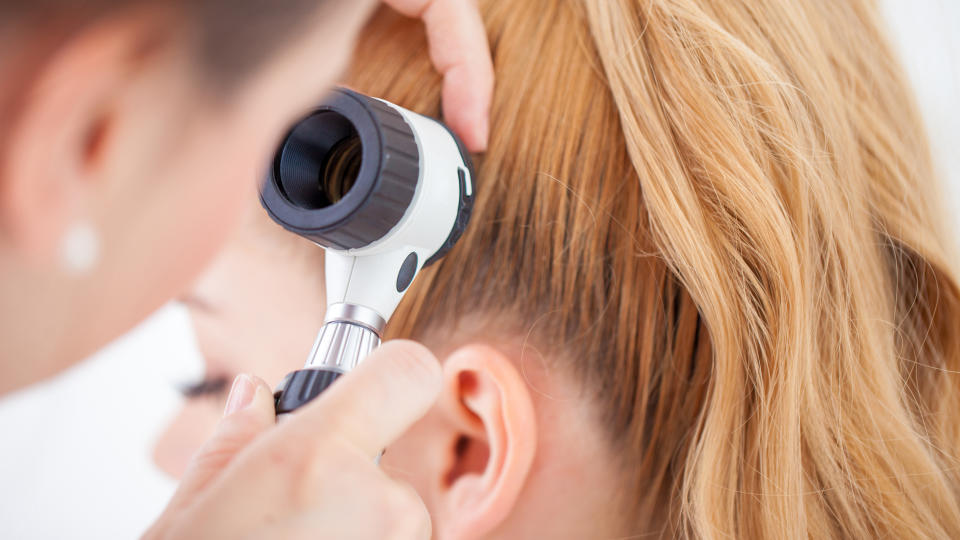The most surprising places melanoma can hide
When you check your skin for suspicious moles, you probably look at your arms, chest, stomach, back, and legs. But melanoma, the most deadly form of skin cancer, can show up anywhere you have skin — even in places that the sun doesn’t reach.
Melanomas are most commonly found on the chest and back in men and on the legs in women, according to the American Cancer Society, but they’re also likely to show up on the neck and face in both sexes. However, melanoma isn’t limited to those places.

“We see melanoma everywhere,” New York City dermatologist Doris Day, MD, author of Beyond Beautiful, tells Yahoo Lifestyle. She’s seen it show up in a person’s belly button, in between the butt cheeks, between the toes, under the nails, on the scalp, and behind the ears. In rare cases, you can even develop melanoma inside your eyes and mouth and on your genitals, according to the American Cancer Society.
Related: This ‘ugly duckling’ marking could signal the deadliest skin cancer
That’s why it’s so important to have every inch of your skin checked by a dermatologist, Gary Goldenberg, MD, assistant clinical professor of dermatology at the Icahn School of Medicine at Mount Sinai in New York City, tells Yahoo Lifestyle. The American Cancer Society recommends checking your own skin once a month and having a doctor do it “regularly,” which Day says is usually once a year.
Here’s the thing, though: You have to know what you’re looking for. “Many times people are concerned about a raised spot that’s fine, but there’s another concerning one near it that they think is nothing,” Day says. “A lot of times, people don’t recognize what’s normal and what’s not.”
When you inspect your body, you want to be thorough. You can rope in a partner to help with your back and hard-to-see places, or you can use a hand-held mirror to get a good look, suggests the American Cancer Society.
In general, you’re looking for new or changing moles, and you want to follow the ABCDE rules for skin cancer detection, Day says. A stands for asymmetry (i.e. if you cut the mole in half, one side of the mole looks different from the other side), B stands for border (concerning spots may have a jagged edge), C stands for color (harmful spots can be black, gray, blue, or white), D stands for diameter (any spot larger than the size of a pencil tip eraser is concerning), and E stands for evolution (whether a spot changes in size, shape, or color over time). If you come across a spot that meets any of these criteria, you need to see a dermatologist to have it evaluated, says Goldenberg.
Melanoma is serious, and it’s not something that you want to put off or ignore. About 91,270 new melanomas will be diagnosed in 2018, according to estimates from the American Cancer Society, and more than 9,000 people will die of the disease.
If you happen to spot a mole that looks unusual on your body, it’s always best to just get it checked out to be safe, Day notes. It’s also a good idea to take a picture of it and keep taking photos during your monthly skin checks to see if it’s changing, and to have a record to show your doctor during follow-up visits.
Read more from Yahoo Lifestyle:
Follow us on Instagram, Facebook, and Twitter for nonstop inspiration delivered fresh to your feed, every day.
